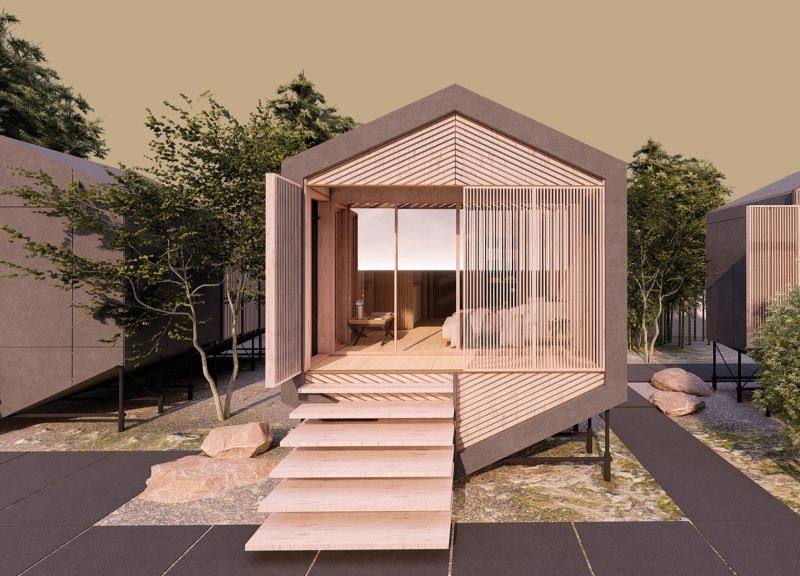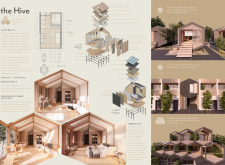5 key facts about this project
The Hive is a modern design that focuses on the challenges of urban living through a thoughtful approach to structure and space. Located in a bustling urban environment, the Hive serves as a micro home that meets the varied needs of its inhabitants. The design is based on modularity and flexibility, allowing each unit to adapt according to the lifestyle of its residents while fostering a connection to the broader community.
Modularity and Flexibility
The layout of the Hive features both fixed and flexible components. Fixed areas include essential functions like cooking and bathing, while flexible zones can be used for dining, working, resting, or sleeping. This arrangement provides options for residents to customize their environments based on their activities and preferences. The design supports a lifestyle that can change and evolve, making it practical for modern urban dwellers.
Material Choice
Prefabricated building systems play a key role in the Hive's construction. The design employs Structural Insulated Panels and l-joist frames, which facilitate efficient assembly and reduce on-site construction time. The use of timber ensures durability while also contributing to energy efficiency. This material selection aligns with practices aimed at sustainability and comfort in living spaces, creating a welcoming atmosphere for residents.
Spatial Efficiency
The Hive is designed to make the most of a small footprint. It addresses the challenges posed by rising urban density, allowing for different configurations that fit various site conditions. This adaptability is essential in contemporary urban environments. By promoting cohabitation and encouraging interaction among residents, the Hive reflects the importance of community, while still providing personal spaces for individual privacy.
The design includes a unique honeycomb geometry that enhances both visual interest and functionality. This shape not only contributes to the overall aesthetics but also emphasizes the Hive's role in creating a shared living experience, blending individual needs with community engagement.



















































